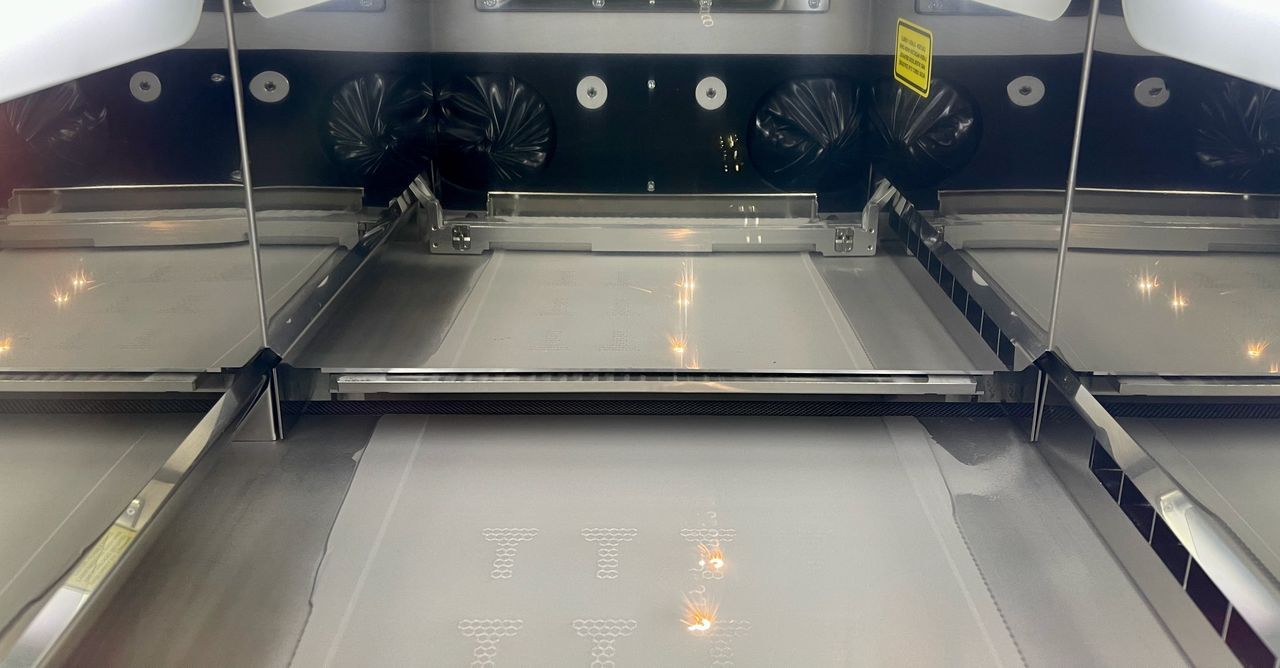
We learned about Renishaw’s new metal 3D printing technology, Tempus.
Renishaw is a global company providing not only metal 3D printers, but a vast array of other manufacturing gear.
Tempus is a new laser scanning algorithm that’s implemented on the company’s RenAM 500 series of metal 3D printers.
The algorithm is designed to make printing faster, and it’s quite ingenious. But first, let’s review how LPBF metal 3D printers operate.
The LPBF systems have a “recoater”, which is essentially a wide blade. It pushes fine metal powder onto the print area and ensures it is completely flat. Then the laser blasts areas to fuse some of the powder into the desired part. The process repeats, layer by layer until the entire object is built.
The sequence of lasering and recoating occurs over and over during a print job, with each sequence contributing to a single layer. The total duration of the print job is the sum of both the laser activity time and the recoating time.
The recoating can take up a considerable portion of the print time, and many manufacturers have invented ways to somehow reduce its effects. Here, however, Renishaw has invented an approach that in retrospect seems obvious, yet no one has done it.
The idea of Tempus is to light up the lasers while the recoating is still ongoing. This makes complete sense, because the powder is basically ready to go as soon as the recoater passes by.
This means that the laser path is synchronized to the recoater so that it accesses the freshly laid powder, but not the recoater itself.
The result is that a portion of the recoating time is eliminated because the lasers become active earlier on each layer.
Renishaw told us that the savings can be as much as nine seconds per layer. That doesn’t sound like much on its own, but remember that there are perhaps hundred of layers in a print job. It all adds up. They said that while the speed up effect varies depending on the job, the average savings is about 30% for each job.
That’s quite significant because these metal 3D printers are almost always production machines that must run 24/7. By decreasing job time by 30%, it means that 30% more jobs can be run on the same machine.
Tempus can be installed on existing machines with a firmware upgrade, and company representatives explained that it should be available towards the end of 24Q1.
It’s a good day when your equipment suddenly gets faster.
Via Renishaw
